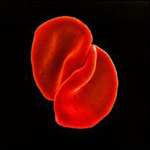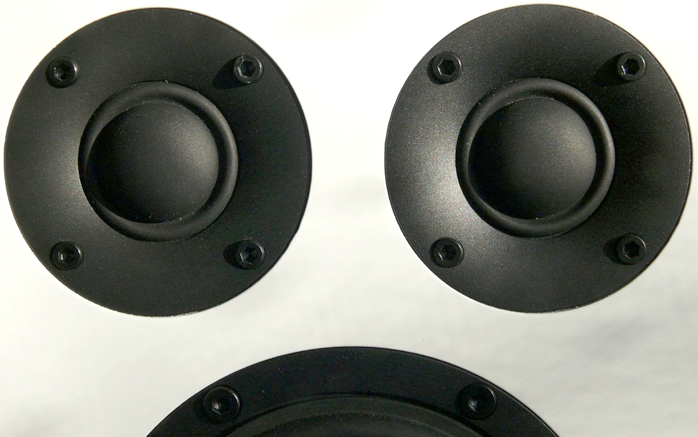This review page is supported in part by the sponsors whose ad banners are displayed below |
 |
 |
|
 |
|
 |
"Sankt Staffans Visa" from Hush! The Angels are Singing [FIM CD001 1997] is a Winston Ma remastering of a 1966 Proprius recording with purist 2-microphone technique for detail, dynamics, air and massed vocals in a church acoustic which beautifully captures the talent of the Church Chamber Choir of Stockholm Sweden |
|
| "Cello Lesson" from "The Soloist: Music from the Motion Picture: Dario Marianelli [Deutsche Gramophone B001229802] is an assortment of mainly Beethoven with moments of huge hall and soundstage incidents with poignant solo and full orchestra. This cut is a moving version of Bach’s Partita N°.1 for Cello highlighting string detail, inflection and instrument body. |
|
|
 |
"End Credits Star Trek II Wrath of Kahn" from Symphonic Star Trek:Kunzel/Cincinnati Pops Orchestra [Telarc CD90383] has Kunzel showing the talents of an emerging young James Horner. All of Telarc’s strengths are here - tremendous dynamics, punch and detail to match Horner’s breakneck pace of string and brass. |
|
| "Pachelbel/Canon in D" from This is K2 HD Sound [FIM K2 HD 078] is a potpourri of excellent recordings remastered by Winston Ma. This is a percussion track that challenges a system’s ability to keep the character of the instruments intact and position them in the soundstage. There is a complex and diverse mix of transient and decay with these varied instruments plus the recording has wide dynamics, a huge transparent stage and ample hall acoustic. |
|
|
 |
"Heroes" from the FLAC Scratch my Back: Peter Gabriel 24/48 Studio Master FLAC [Society of Sound Music:22 Realworld Bowers and Wilkins] is from Real World Studios and an introspective and powerful group of cover songs from a wide variety of musicians. Teamed with the London Symphony Orchestra for a minimalist stark approach, Gabriel brings to this David Bowie song devastating emotional gravitas for a strong number in an album of exceptionally strong material. |
|
|
|
|
|
 |
The Ologe ONE was holistic in its frequency reproduction, flowing outwards in both directions from a palpable midrange and displayed a musical rather than analytical balance. In this respect it was in good company by bearing a tonal resemblance to the AudioSpace AS3/5A (itself a tribute to the LS3/5A) and to the spirit of the John Blue M3 single-driver speaker. The Ologe didn’t emphasize the extremes at the expense of the whole yet dove deep enough into the bass to give credible weight to the majority of the orchestra and a sense of what extended further down. The soft dome tweeters offered a high-frequency reproduction that was a logical extension rather than any grandstand performance - detailed without being incisive.
|
 |
The Achilles heel of many small speakers is bass. Not here. The ONE plays it full and meaty if not with quite the veracity of Mark & Daniel loudspeakers. Bass performance was remarkable given that we are discussing a puny 3.75" woofer. The ONE extended down to a hefty 35 cycles with respectable output, albeit with a few peaks and dips outside its tighter +/- dB specification above 65 cycles for not subwoofer territory but enough range to do justice to a good portion of the orchestra. Although the woofer proved itself a feisty overachiever, it did show some character in the 70-150Hz region in combination with the ASTAND. When the speaker was pushed at those mid/upper bass power frequencies, the woofer generated a huge amount of energy back into the small enclosure. If the information was transient in nature, Ologe’s RVGS arrangement was successful at dealing with it cleanly. If however the RVGS was bombarded with sustained output at those frequencies, it couldn’t transfer and dissipate the energy fast enough. That then created a minor resonance loop that overlaid the original signal.
|
 |
|
|
|
Dynamics and detail were an interesting mix. Dynamics were at their greatest precisely in the mids and upper mids where especially female vocals soared. In this band there was a strong sense of ease and lack of stress provided that the speaker was driven at reasonable levels. Although Ologe specifies 100 - 500 watts, actual sensitivity was far better in real life situations than the low 84db/1W/1m numbers indicated. It worked extremely well especially at lower levels to achieve wide dynamic agility both macro and micro whilst retaining the built-in tonal signature. Beyond its liveliness at lower levels, the overall available output range was commendable with absolute loudness disproportionate to size. As the ONE approached its limits, the speaker exhibited some progressive compression in the bass but maintained its exceptional midrange exuberance. It should be noted that with more reasonable loudness aspirations the ONEs were surprisingly satisfying and depending on source material captured the character of a larger speaker. For those who demand louder and deeper, a subwoofer would offer logical enhancements.
|
 |
Transients were a little on the soft side but decays and ambient information were rich with a generous cushion of air around instruments that was broadband rather than high-frequency sizzle. The speaker reproduced a wealth of detail but different in style to a ribbon or Heil driver. Those emphasize greater attack. As a result the ONE gave up some transparency to achieve a more encompassing solidity.
The Ologe extended a wide-screen panoramic soundstage with full room height. The speaker imaged big both on soundstage and image size. The first plane was centered at the speaker position with good forward projection but traded off a small loss of depth. The ONE was relatively forgiving of listening distance, managing a character of immersion in the near field and extended a more conventional large soundstage at farther positions. In the best tradition of small monitors the ONEs managed to remove themselves as image sources and were only incidental in the picture. The speakers were adept at conveying an immense sense of space populated with life-size images but lacked some precision in focus to carve out the details of that information. The emphasis was on scale and performance over absolutes of position and dimensionality.
|
 |
  |
 |